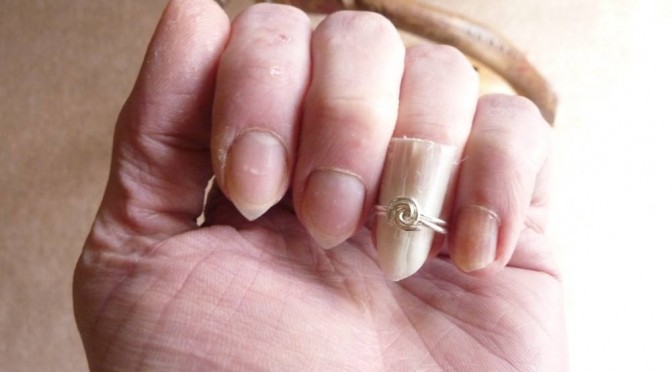andere haben Feder-Spuhlen genommen, ins Wasser geweicht und breit gemacht, hernach ihnen die Form solcher Nägel einigermassen gegeben, und sie wie die silbernen mit Ringlein an den beiden ersten Fingern vest gemachet.
— [Johann Philipp Eisel], Musicus αυτοδιδακτος, oder der sich selbst informirende Musicus, Erfurt 1738
Eisel’s advice to players of the spitzharfe or arpanetta addresses an issue for players of musical instruments which are played by the fingernails – how do you manage if a nail is injured and cannot be used?
Nowadays it is normal to glue a false nail made typically of plastic, to extend a too-short or damaged natural nail. However I have an injury to the ring finger nail of my left hand, so that this is not possible – the natural nail is too weak to support an extension.
I thought of Eisel’s quote, which I would translate
others have a feather quill, softened in water and flattened, cut into the form of a nail, and they attach one of these to each index finger with a silver ring.
I cut a section from one of my mother’s goose quills. At first I used part of the straight shaft, but actually the pointed end works better, as the quill curves down like a natural nail does. I did not soak the quill in water before flattening – I will try that next time. Mine cracked or creased a little.
And I made a little silver ring, out of spare silver harp string wire.
I have not finished working at this – it is less comfortable to wear than it should be; either it is comfortable but the quill shifts and clicks as you play; or the ring is too tight. I wonder if a wider band may work better.
However I am delighted to have a hand-made natural alternative to superglue and ping-pong balls, or the clip-on plastic picks.

